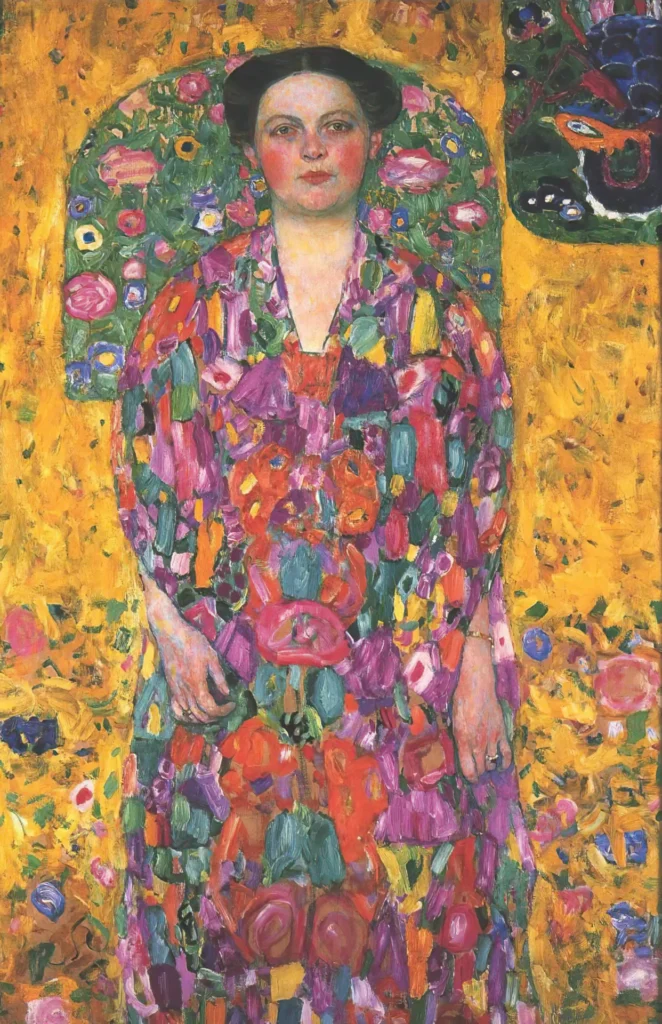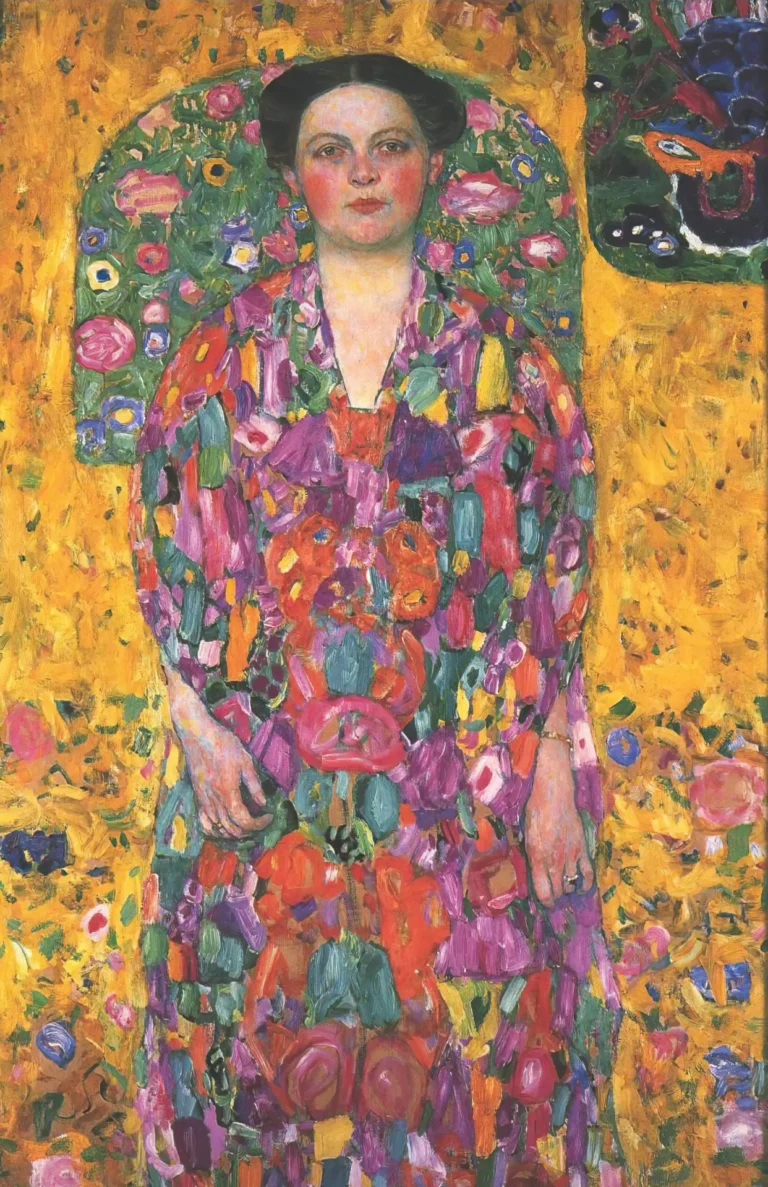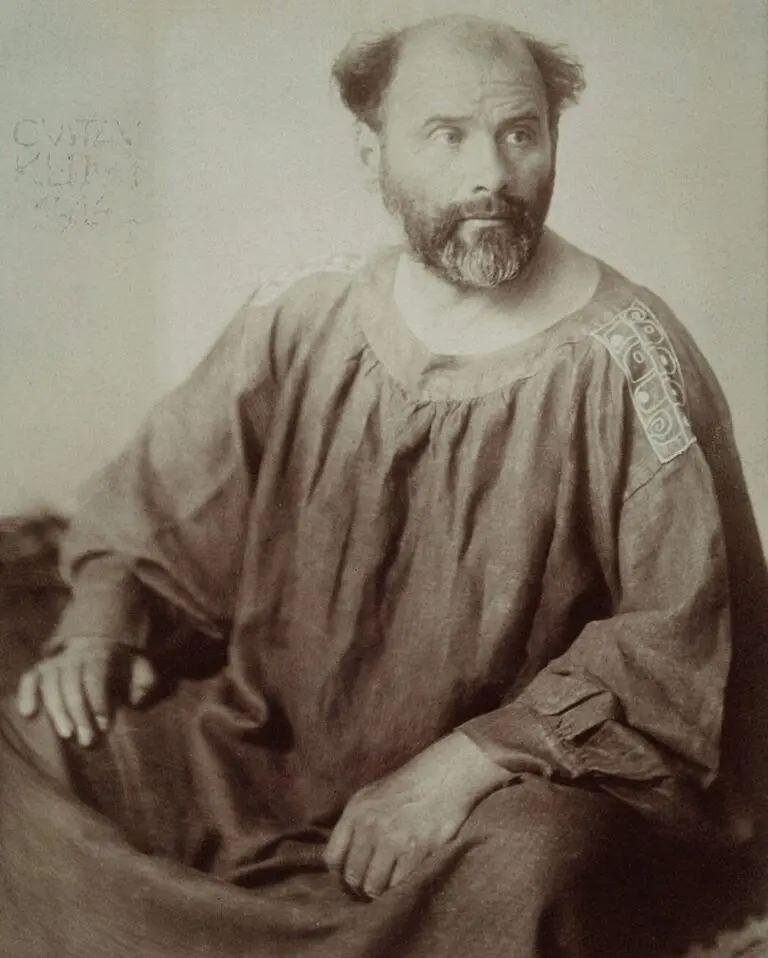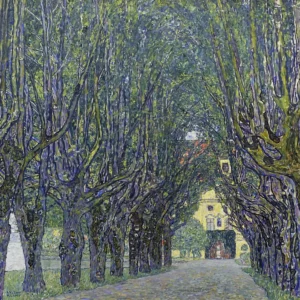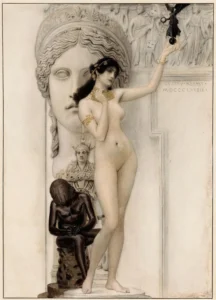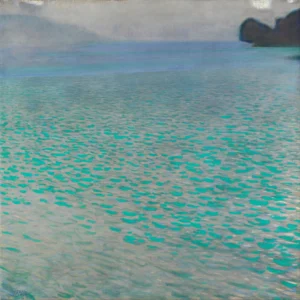Portrait of Eugenia Primavesi (1913)
The Portrait of Eugenia Primavesi captures the essence of the elegant titular figure, a prominent personality in Vienna’s artistic circles during the early 20th century. Standing confidently against a vibrant floral backdrop, Eugenia wears a striking kimono, which harmonizes with the ornamental elements characteristic of Klimt's style. This piece exemplifies the fusion of naturalism and decoration, marking a significant contribution to the Art Nouveau movement.
1913 - 1914
About the Artwork
This portrait of Eugenia Primavesi emerges from a privileged context, as she was the wife of Otto Primavesi, a significant banker and art patron in Vienna. Klimt was commissioned to create this piece after successfully portraying the couple’s daughter in 1912. His meticulous preparation involved numerous sketches, showcasing his dedication to portraying Eugenia's serene demeanor and stylish presence. The inclusion of rich patterns and colors reflects the fashionable culture of the time, while the Chinese phoenix motif and floral elements convey deeper artistic meanings, blending Eastern and Western inspirations.
Did You Know
Liked what you see? Add it to your collection.
Enjoyed reading? Share it.
... continued
Subject and Composition
The portrait depicts Eugenia Primavesi, the wife of Otto Primavesi, a banker and industrialist. Eugenia was an actress before her marriage and was well-known in Vienna's fashion and artistic circles. She is shown standing, facing the viewer directly with a serene and composed expression, exuding confidence and poise.
Style and Technique
The painting is an oil on canvas, measuring 140 by 84 centimeters. It is a prime example of Klimt's "flowering style," which is marked by the use of vibrant, almost acidic colors and intricate patterns. The artwork features a bright kimono that Eugenia wears, which was fashionable in Vienna at the time. The kimono's busy design blends almost seamlessly into the floral background, painted predominantly in bright yellow. An area of green behind the sitter suggests an outdoor or garden setting, and an oriental bird motif, specifically a Chinese phoenix, is visible in the top right corner.
Artistic Elements
The portrait showcases Klimt's characteristic ornamental style, with a rich use of geometric and natural forms. The flat, decorative elements coexist with the naturalistic portrayal of Eugenia's face and hands, creating a dynamic tension that is a hallmark of Klimt's work during this period. This blend of styles reflects the progressive spirit of the Art Nouveau movement.
Background and Context
Eugenia Primavesi and her family were keen patrons of Austrian art. They had connections with the Weiner Werkstatte, a renowned arts and crafts movement, and commissioned several notable works, including the Palais Stoclet in Brussels designed by Josef Hoffmann. Klimt was invited by Otto Primavesi to paint Eugenia's portrait after he had previously painted their daughter, Mada, in 1912. Klimt made numerous sketches in preparation for this painting, indicating his meticulous approach to capturing his subject.
Current Location
The Portrait of Eugenia Primavesi is currently part of a private collection.




